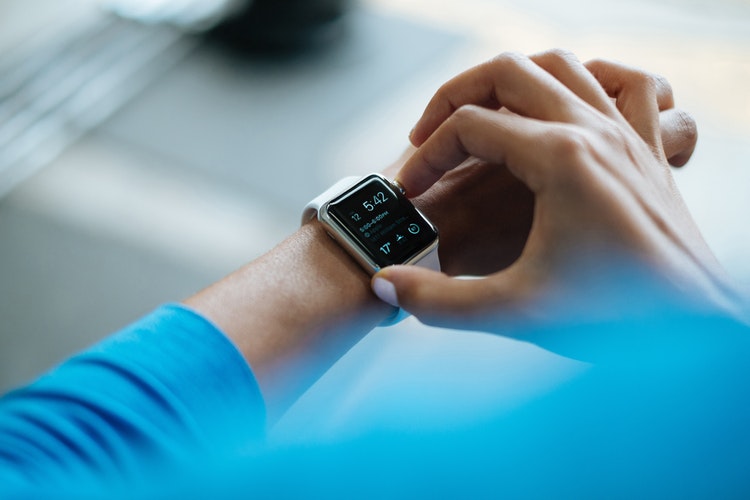IT professional Ashish Raveendran postponed buying the latest iPhone for six months. He used that time to pore through consumer reviews, do product research and closely follow reviews of tech gurus and friends. “I had to be sure it would be long-lasting and had all the latest upgrades,” says the Bangalore techie, who had saved for two years for the iPhone. Value for money is what millennials like Raveendran (27 years) look for while buying a device. And, like most millennials, he’s heavily “dependent” on his gizmos– his iPad and an Apple watch included to keep him plugged on to his phone 24X7 and to monitor his fitness levels.
Take the case of media professional Suvarna K (26) too. Her need to “stay connected to the world” makes her shop for at least three consumer tech products in a year. More recently, her shopping wish list has expanded to include a smartwatch and a voice assistant. Spending about Rs 45,000 a year on tech, she tucks away a small part of her salary each month for her big ticket purchases.
“After interacting with Alexa at a friend’s place, I am really excited about voice assistants now,” says this millennial, who admits wryly that she spends a significant part of her day on her gadgets, catching up on new music videos and OTT shows on her mobile or swiping through her Instagram feeds a zillion times.
The Digital Native Millennials
The Millennial, who is anyone born after 1982, is a big consumer of tech products at present. It is this group that tech brands are pursuing now it seems. Difficult to ignore, millennials constitute nearly 46 per cent of country’s total population ( a Morgan Stanley report) and are the ones, with “high disposable incomes” and spending power. Studies reveal that they are mostly chief wage earners in a household and tend to spend rather than save. So, brands are tweaking products and marketing strategies to appeal to this digital native bunch.
For example, PC brands have moved away from making generic computers. To cater to the varying needs and evolving tastes of millennials, there are PCs for doctors or video editors, PCs for students, one for entertainment or for gaming. Or, a Thinkpad for the uber professional etc. Also brands find it challenging to pin down a millennial’s persona since they like to keep their identities fluid. Millennials are entirely different from their previous generation by their lifestyle choices and consumption patterns but few common threads have emerged in the past few years.
The Influential Millennials
To begin with, social media obviously plays a big role in choices “connected” millennials make. According to Raveendran, millennials are continuously connected to social media and this helps to make choices faster. “The discovery phase of shopping is happening online”, confirms Kumar Rajagopalan, CEO, Retailers Association of India (RAI). “In one of our surveys, 85 per cent of 50,000 customers discovered products online. They pore through reviews, hunt for comparisons, analysis and then buy a product,” he says. Social media is teeming with user experiences and stories shared on the web, ratings, recommendations and they act as user generated advertorial content.
Therefore, brands need to look at millennials as “prime influencers” and not just prime consumers, suggests Kumar Rajagopalan. For millennial user reviews are read by older consumers too and of late, millennials seem to be advising and influencing their grandparents to use new gadgets to manage their lives better, he says.
The Fitness Drive
Millennials dislike being “boxed” in a group but a factor that commonly drives millennials is product value. A fact also echoed by Jayalakshmi R (24 years), a tech geek. “I look for durability, hard-core value and features like VR or AR enabled rather than look for an expensive brand,” says this PR professional, who finds plenty of value in her fitness band, which warns her if her lifestyle is turning sedentary. Here’s one more millennial trait – they are increasingly health conscious and lay a lot of emphasis on their physical and emotional well-being. Studies seem to substantiate this theory: 36 per cent of Indian millennials have a fitness app installed on their phones and about 45 per cent believe a healthy life is essential.
Besides, millennials need nudging, says Jayalakshmi. “We are a distracted lot with so much happening around us, we need to be reminded of our daily chores,” she adds with a grin.
Authentic Conversations
Millennials are also driven by “authentic conversations” online to buy tech. There’s less attention given to staged and paid reviews. “No longer do millennials aspire for what others project on social media, which may often be fake,” suggests Jayalakshmi. So, they scour the Net to get to influencers with honest reviews.
Some head to Instagram pages of the product directly to source real reviews. In this situation, it is key for brands to resonate with what millennials care about. Social causes are very much the vogue, and experts say millennials prefer a brand that does not sit on the fence and goes all out to voice its opinions. But, brands needs to keep communication subtle and intelligent and not go for the overkill.
Constant Innovation
The limitless access to information, communication and entertainment are however rewiring their brains and changing their responses to marketing stimuli. So, marketing gurus believe that brands have to continuously innovate to keep up with a Nielsen study description of them–“Millennials may be many things, but they may not be what you expect.” So, very often, experts advise brands to blend in with social circles of millennials, which are mostly online and mobile, and stress on creativity and authenticity to keep them hooked.
In the end, Kumar Rajagopalan’s advice might be worth mulling over: “Brands need to think like a 20/20 player – their messages have to be short, effective and thrilling. Secondly, more importantly, brands need to be in sync with how millennials use social media. A platform that is relevant now might not be tomorrow and so brands have to monitor the kind of social media millennials inhabit. Take the case of how popular OTT platforms are with them now as an example. Brands need to be where they are to catch their attention.” Move in their world to know them seems to be a useful mantra then to stay with for now!




